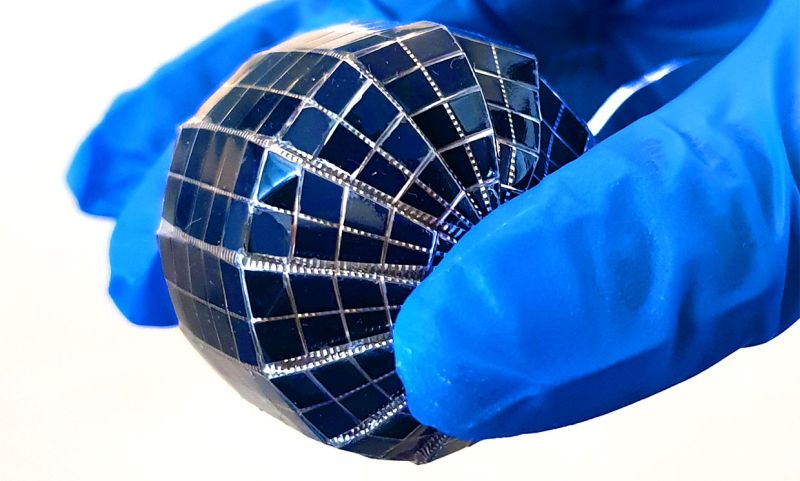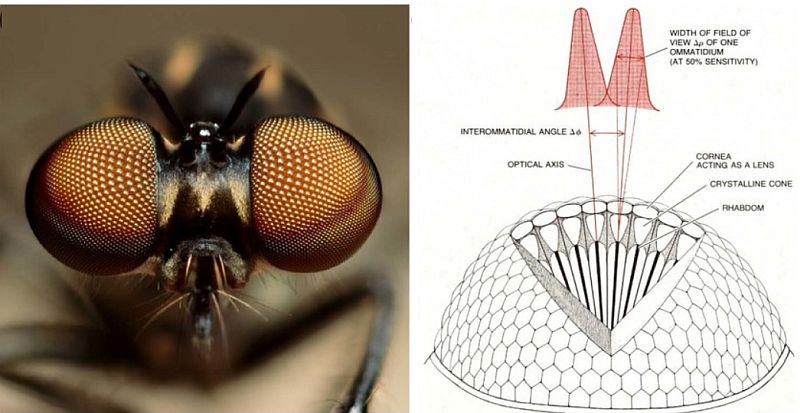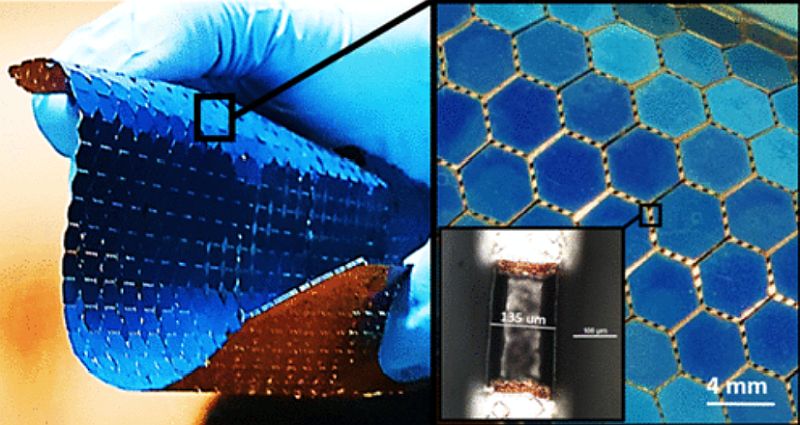
Flat solar panels dominate the world market when it comes to capture solar energy directly from the Sun. However, the flat design has a major limitation as it cannot keep track of sun’s apparent motion.
Saudi researchers have come up with an ideal solution to this problem. They have designed spherical solar cell that would boost solar energy harvesting from nearly every angle, a feature which was missing with conventional flat solar panels.
Spherical solar cell is about the size of a ping pong ball. Under the (indoor) solar simulator lamp, the prototype has shown nearly 15 to 100 percent more output with respect to flat solar cell of the same surface area.
Scientists are of the view that their nature-inspired design will do well in future field tests across the globe.
Why it has been called nature-inspired design?
As per Nazek El-Atab the lead scientist, the design has been inspired by housefly’s compound eyes. Location and shape of eye in the insect is such that they have 270° field-of-view. Since, spherical architecture increases the ‘angular field of view’ so they translated it into their new spherical solar cell design.

Their aim is to harvest sunlight from more than the existing directions.
The current design is an extension of their ongoing research on thinner and more flexible solar cell designs.
What is solar energy harvesting?
It is the process of capturing the solar energy in form of sunlight directly from the sun.
Eventually, light and heat from the sun is then converted to electrical energy.
Why do we need solar energy harvesting?
Solar energy is free and hence, it is readily available across all parts of the globe.
In just a single year, sun can provide the earth with 15,000 times more energy than atomic and fuel energy that are required in the same time frame.
If resources from fossil fuel is consumed at the present rate, the earth will get depleted soon. Additionally, production of these fossil fuels is increasing every year.
Its nearly doubling the amount of use of each fossil fuel. If this continuous, no sooner it will create an unprecedented energy crisis on our planet. Therefore, the need of the hour is to harness solar energy with new solar technologies coupled with innovating designs than the existing ones.
Spherical solar cells could be a solution that may thwart the impeding energy crisis on earth.
Spherical solar cell outperforms the flat solar cell
When kept under the solar simulator lamp, the spherical solar cell proved its efficiency over the conventional flat solar cell. It accounted for nearly 24 percent more power output when exposed to sunlight immediately.
That power advantage further increased to 39 percent when both – spherical and flat solar cells -had begun to heat up.
Also, the spherical solar cell gave an approximately 60 percent more output relatively when both were kept under scattered sunlight.
Other factors like the background too impact the efficiency of the spherical solar cells. Out of aluminium cup, aluminium paper, white paper and sand, hexagonal aluminium cup background helped it in unleashing 100 percent of power output.
Light-harvesting potential of solar cells
Spherical solar cells are fabricated from monocrystalline silicon solar cells. The entire volume of monocrystalline silicon solar cell is a single crystal of silicon. And it’s preferred over 90 percent of the world’s solar power production.
Idea is to scale up production from the basic structures if the design proves cost efficient.

Once it comes into the production line, the newly achieved ultra-flexibility of solar cells will morph it in any shapes and ‘solarize’ everywhere says Zhe Liu, a postdoctoral researcher in solar engineering at MIT.
This is not the first time such spherical solar cells have been created. Previous such solar cells were created at nanoscale. They were fabricated with the help of nanowires and quantum dots and were placed on top of a flat surface added Rabab Bahabry, an assistant professor of physics at the University of Jeddah.
However, researchers envision the new spherical solar cells will improve efficiency and coverage. Unlike the previous version, the new microsphere arrays will help in collecting more sunlight that is being reflected from background surfaces.
Fabricating large spherical solar cells
While creating large spherical solar cells, developers etched the alternate grooves in 15% of a flat solar cell. The etching created a band of elliptical shapes, connected at the inside.
Further CO2 laser is used for rendering into appropriate pattern. Resultant flex and bend in the grooves enabled the researchers to subsequently fold the solar cell into a spherical shape.
Process of etching reduce the overall potential solar power output as some amount of solar cell material had been shredded. But researchers preferred the long-term benefit of solar cells over flat solar cells.
The spherical design has less tendency to accumulate dust. Also, it may aid evaporate heat that would otherwise diminish the solar cell’s effectiveness. Furthermore, the spherical solar cells – because of its architecture – doesn’t require additional costly moving parts to continually track the sun.
Global deployment of spherical cell arrays
However, Liu from MIT asserts that at utility-scale the spherical solar cells might not eclipse traditional solar cell technology. Nevertheless, the spherical designs may find an apt and promising role in more niche market applications including but not limited to mobile devices, IoT (Internet of Things) sensors and autonomous vehicles.

In due course, researchers at Saudi foresee fabricating and testing large arrays of the spherical solar cells. Additionally, they are working on new shapes that mimic tents and umbrellas to check if those offer any future advantages.
They have already integrated solar cells with surfaces of drones that have curved and limited-area surfaces.
For future applications, they are looking forward to deploy the arrays of spherical cells globally to better understand its performance and reliability.
Via: Jennifer Chu, IEEE Spectrum



